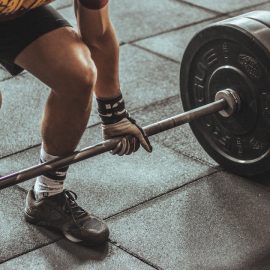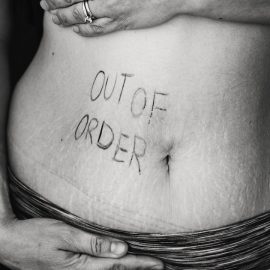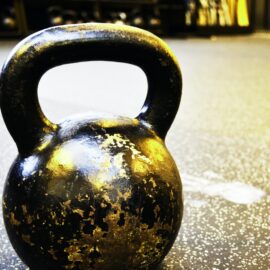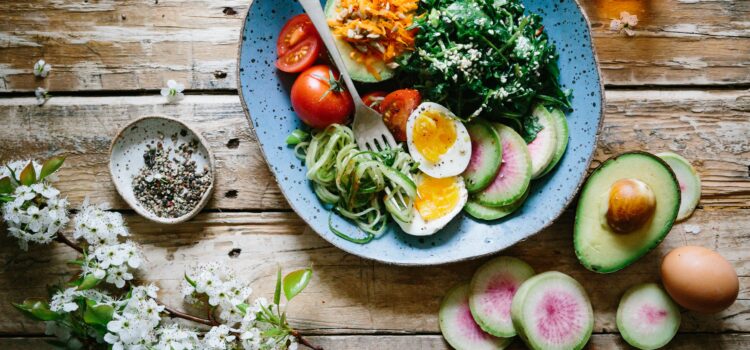
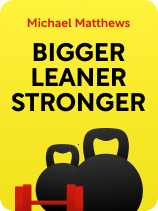
This article is an excerpt from the Shortform book guide to "Bigger Leaner Stronger" by Michael Matthews. Shortform has the world's best summaries and analyses of books you should be reading.
Like this article? Sign up for a free trial here.
What’s the best diet to lose fat and build muscle? Which matters more—how much you eat or what you eat?
In Bigger Leaner Stronger, Michael Matthews argues that you can get the physique you want without a trendy diet or a brutal workout. All it takes is a simple and scientific approach to nutrition and exercise. He advocates flexible dieting—a diet that allows you to lose fat, gain muscle, and eat the foods you love.
Read more to learn about the Bigger Leaner Stronger diet and its “calories in, calories out” approach.
The Bigger Leaner Stronger Diet
Let’s explore the role of nutrition in your health and fitness journey. Matthews argues that flexible dieting is the best nutrition approach to losing fat and building muscle. Flexible dieting simply means managing your calorie intake and eating a healthy balance of macronutrients (macros). This Bigger Leaner Stronger diet allows you to get the nutrients you need and the physique you want without sacrificing any particular foods.
(Shortform note: Many think that the main advantage of flexible dieting is that it’s easy to follow for a long time, which is important because long-term health and fitness gains depend on your ability to be consistent with your diet. It’s also adaptable enough for people with special dietary restrictions to follow. Beyond simply being easier to follow, some studies show that flexible dieting may help you consume more micronutrients—vitamins and minerals—compared to other diets that may limit you to a narrower selection of foods.)
Macros are nutrients that your body needs a large amount of to function properly—namely, proteins, carbohydrates, and fats. In the following section, we’ll explore the science of “calories in, calories out” and see why flexible dieting works.
(Shortform note: The USDA lists several more macronutrients, not all of which are essential: fiber, cholesterol, water, and alcohol. However, you can eat healthily by focusing only on the three main macros, which is why many experts exclude the others when discussing diet and nutrition.)
The Science Behind Weight Loss: Calories In, Calories Out
Matthews argues that, no matter what diet you follow, your weight depends on how many calories you eat and how many calories you burn. In other words, the amount of food you eat matters more than the kinds of foods you eat. This is because all foods give you energy (which is measured in calories), and, according to the law of thermodynamics, energy can’t be created or destroyed. Excess energy gets stored in your body as fat, so, to lose weight, you must simply eat fewer calories than you burn each day. When you expend more energy than you consume, your body burns fat.
(Shortform note: Other experts agree that calorie intake is the main determinant of weight loss but disagree that the kinds of food you eat don’t matter. In How Not to Diet, Michael Greger writes that eating plant-based foods is more effective for weight loss because they contain a lot of fiber, which helps lower the amount of calories your body stores as fat. This is because, when ingested, fiber envelops other foods and prevents your body from digesting them.)
Still, there are certain guidelines you should follow to maintain your health on this diet. According to Matthews, a flexible dieting meal plan should have three key elements:
Element #1: A large amount of protein. Protein helps your body build muscle and other tissues. According to Matthews, a high-protein diet can speed up fat loss, increase muscle gain, improve metabolism, decrease hunger, strengthen your bones, and boost your mood.
(Shortform note: Getting enough quality sleep may be required to reap the benefits of a high protein diet that Matthews lists. This is because during sleep the body produces large quantities of growth hormones, which are crucial for tissue repair and muscle growth. According to one study, people who slept less than five and a half hours per night lost 60% more muscle mass and 55% less fat than people who slept eight and a half hours.)
Element #2: Minimally processed foods. These are foods that are in a form very close to how they grow in nature (like vegetables, fruits, meats, and nuts), which contain many important nutrients your body needs. Matthews writes that the more foods get processed, the more likely they are to contain calories that don’t provide nutritional value. Minimally processed foods also help you burn more calories because they require more energy to digest. He says that ideally, 80% of your diet should consist of these types of food.
(Shortform note: In In Defense of Food, Michael Pollan agrees that most of your diet should consist of minimally processed foods. He suggests you use the great-grandma test if you can’t tell if a food item has been heavily processed: Imagine your great-grandma or a distant ancestor examining it. If the product and its ingredients would confuse your great-grandma or ancestor, then it’s likely been heavily processed. Another rule of thumb Pollan suggests is to avoid foods containing more than five ingredients or ingredients that are hard to pronounce. Otherwise, you’re likely eating foods with additives such as fake flavors or sweeteners that your body can’t digest, thus providing you with calories but no nutrients.)
Element #3: Your preferred balance of carbs and fat. You can decide whether to eat more carbs versus more fat based on your taste. Matthews contends that the ratio of carbs to fat has little impact on your physique. If you’re relatively active, however, he says you should eat a moderate or high-carb diet to boost your muscle gain. Your body uses carbs to create glycogen, which fuels your workouts and helps you repair and build muscle.
(Shortform note: Other experts agree with Matthews, arguing that, the more active you are, the more carbs you should eat. Carbs are a fast-acting energy source, ensuring that the protein you consume is used for muscle growth and repair rather than as an energy source. By contrast, low-carb diets may decrease your performance during intense workouts.)

———End of Preview———
Like what you just read? Read the rest of the world's best book summary and analysis of Michael Matthews's "Bigger Leaner Stronger" at Shortform.
Here's what you'll find in our full Bigger Leaner Stronger summary:
- How to get the physique you want without trendy diets or brutal workouts
- A simple and scientific approach to nutrition and exercise
- How to plan a workout program based on progressive overload


